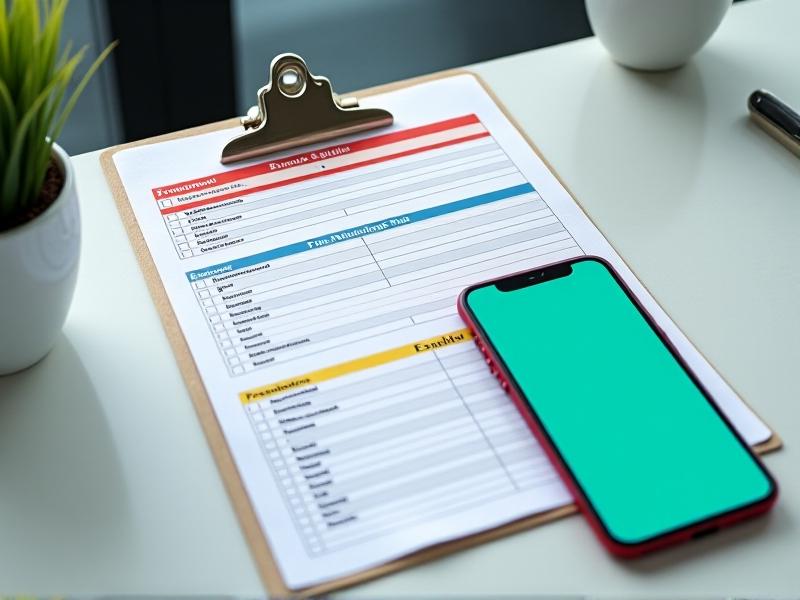The 48-Hour Flip: Quick Turnaround Projects for Maximum ROI
Understanding the 48-Hour Flip Concept
In today’s fast-paced market, the ability to execute quick turnaround projects—often dubbed "48-hour flips"—has become a game-changer for investors, entrepreneurs, and creatives alike. This approach prioritizes speed and efficiency, focusing on low-effort, high-impact tasks that generate rapid returns. Think of it as a sprint rather than a marathon: identify undervalued assets, apply targeted improvements, and reposition them for immediate profit. Whether it’s a dated property needing cosmetic upgrades, a digital product requiring a rebrand, or a social media campaign optimized for virality, the 48-hour flip thrives on minimizing time investment while maximizing ROI.

Identifying Opportunities for Quick Turnarounds
Not every project is suited for a 48-hour flip. The key lies in recognizing low-hanging fruit—opportunities where minimal input yields disproportionate rewards. For physical assets, this might involve properties with outdated interiors but solid foundations, or furniture that can be refurbished with a fresh coat of paint. Digitally, expired domain names with SEO potential or abandoned social media accounts with engaged followers are prime candidates. Analyze market trends to spot gaps: seasonal demand for holiday-themed products, trending hashtags, or local events needing last-minute promotional support. Tools like Google Trends, real estate analytics platforms, and social listening software can help pinpoint these opportunities swiftly.

Strategic Planning: Maximizing Efficiency in 48 Hours
Speed requires precision. Start by defining clear, measurable goals: a 20% price increase on a flipped item, 1,000 new followers, or $5,000 in sales. Break the project into micro-tasks with strict time allocations—e.g., four hours for sourcing materials, eight hours for renovations, two hours for marketing. Delegate or automate non-core tasks: hire a virtual assistant for social media posts or use AI tools for graphic design. Pre-stage resources: secure suppliers, draft marketing copy, and schedule deliverables in advance. Contingency plans are critical; allocate buffer time for unexpected delays. A detailed checklist ensures nothing falls through the cracks, turning chaotic sprints into structured, repeatable processes.

Execution Tactics: Move Fast, Don’t Cut Corners
The execution phase is where preparation meets action. For physical flips, prioritize high-visibility upgrades: paint, lighting, and staging. Use modular or prefabricated elements to save time—think peel-and-stick backsplashes or removable wallpaper. Digitally, repurpose existing content: update blog headers, optimize metadata, or reshare evergreen posts with new captions. Leverage Fiverr or Upwork for quick freelance support. Document the process through time-lapse videos or behind-the-scenes posts to build anticipation. Maintain quality by focusing on "good enough" rather than perfection—minor flaws won’t deter buyers if the overall value proposition is strong. Finally, streamline the sales process with pre-negotiated terms or instant-purchase buttons to capitalize on momentum.

Case Studies: Real-World 48-Hour Success Stories
Consider Sarah, a part-time investor who purchased a foreclosure with peeling paint and cluttered rooms. Over a weekend, her team decluttered, repainted walls in neutral tones, and staged the home with thrifted furniture. Listed on Monday, the property sold for 15% above asking price due to its move-in-ready appeal. Another example: Mark, a digital marketer, revived an abandoned e-commerce site selling fitness gear. In two days, he optimized product descriptions, ran a targeted Facebook ad campaign, and offered a 24-hour flash sale, generating $8,000 in revenue. These stories highlight how focused effort, even within tight windows, can unlock significant value.
Measuring ROI: Quantifying the Impact of Speed
ROI in 48-hour flips isn’t just about dollars—it’s about time saved and opportunities multiplied. Calculate direct profits by subtracting costs (materials, labor, marketing) from revenue. Track indirect benefits like increased social media followers or enhanced brand visibility. Use tools like ROI calculators, Google Analytics, or real estate comparables to benchmark success. For example, a $500 investment yielding $2,000 in sales is a 300% return, but also factor in intangibles: customer testimonials, media coverage, or skills gained. Over time, recurring flips compound results, turning quick wins into sustainable income streams.
Avoiding Common Pitfalls in Rapid Turnaround Projects
Speed breeds risk. Common mistakes include underestimating time requirements, skipping due diligence, or compromising legal compliance. Avoid overcommitting—scale projects to fit the 48-hour window. For instance, don’t attempt a full bathroom remodel; focus on fixtures and finishes instead. Verify zoning laws, copyright permissions, or platform policies to prevent costly delays. Use checklists to avoid missed steps, and build in 10–15% buffer time for unforeseen issues. Lastly, know when to walk away: if a project’s complexity exceeds the timeframe, pivot or shelve it for later. Learning from failures refines future flips, turning pitfalls into stepping stones.






